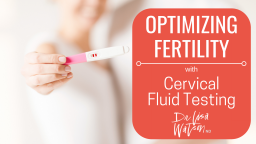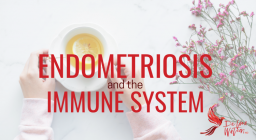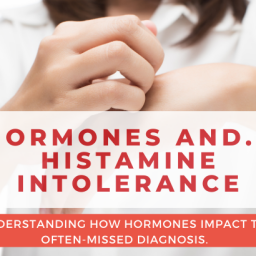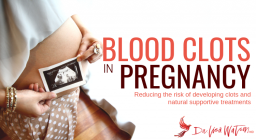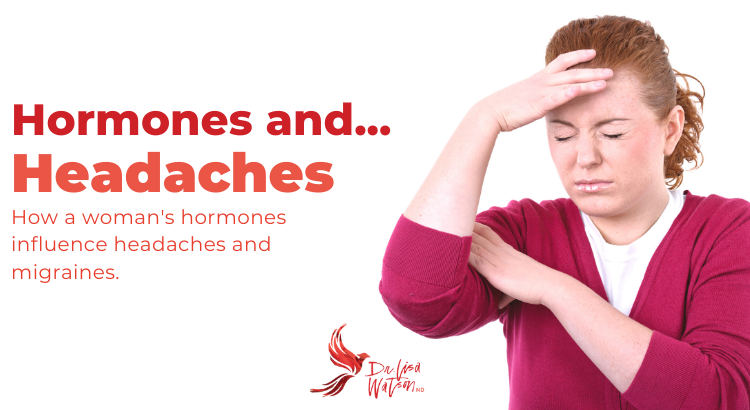
Headaches are one of the most common conditions impacting our health – very rare are the individuals who have never experienced a headache! Studies have found that up to three-quarters of us have had a headache in the past year, with nearly one-third of that number experiencing migraines.
And (surprise, surprise), migraines are far more common in women. Women have nearly a 50:50 chance of experiencing at least one migraine in their life (43% of women vs only 18% of men[1].)
Why are women at a much higher risk of developing migraines? Why, it’s our hormones, of course.
Estrogen and… Migraines
Estrogen, that quintessentially feminine hormone, that rises and falls throughout our menstrual cycle, is a strong influencer of migraines. When estrogen levels are high, migraines are much less frequent. When levels drop suddenly – as happens in the days before your period and during the first few days of your cycle, after pregnancy, and throughout perimenopause, frequency and intensity of migraines are at their highest.
When estrogen levels are high, this hormone has some pretty powerful impacts on our brain function – including being incredibly balancing for our moods. And as far as migraines go, estrogen has these key actions in our brains[2]:
- Estrogen influences the way our brain experiences pain
- Estrogen has potent effects on the way the brain responds to feel-good serotonin
- Estrogen influences the mega-calming neurotransmitter, GABA, improving the way our neurons function
- Estrogen influences the way our brain uses relaxing magnesium
Menstruation, Pregnancy, Menopause and… Migraines
The times of a woman’s life when migraines are most likely, coincide with times of significant hormonal change.
Right before her period starts, and for the first 2-3 days, a woman is most vulnerable to migraines. Menstrual migraines, as they are known, are typically thought to last longer, be more severe, more likely to recur, less responsive to treatment, are more likely to be associated with nausea and vomiting, and cause greater disability for a woman. The vast majority of women who experience menstrual migraines also experience migraines at other points in the cycle, making it hard to diagnose the impact that hormones have on a woman’s migraines.
Fewer than 10–20% of women report migraine exclusively with menstruation and at no other time of the month
Interestingly, only migraines without aura seem to be subject to these hormonal effects. Migraines with aura do not seem to be related to hormones.
Pregnancy, a time in a woman’s life when her estrogen levels are highest, and most stable, is a time where there is a notable decrease in migraines. However, when estrogen levels drop suddenly after delivery, the risk of migraines returning is sky high.
In perimenopause, those rollercoaster years before menopause when hormones are erratic and volatile, a woman is most vulnerable to migraines. Luckily, when menopause arrives there is typically an improvement in migraines. Again, only for women who have migraines without aura – migraines with aura are not as influenced by hormonal changes[3].
The Pill and… Migraines
For women with migraines considering the pill, the research is conflicting. Some women without a history of migraines may begin to experience them when taking the pill. Others may move from having migraines without aura to having migraines with aura. Others see no change at all.
- 18-50% of women see a worsening in frequency or severity of migraines with use of oral contraceptives
- 3-35% of women see an improvement in migraines
- 39-65% see no change in migraines
For women who experience migraines without aura, they may see improvements with using the pill continuously, with only occasional breaks to allow for a period. However, as we’ll discuss below, this isn’t an option I endorse.
Another option is low dose bioidentical hormone replacement therapy to keep hormones stable, especially for women during perimenopause. This can improve migraine frequency and intensity for some women, and has fewer risks than oral birth control pills. Discuss this option with your Naturopathic Doctor and Medical Doctor if you think it might be appropriate for you.
For most women (two-thirds!), menopause leads to improvement in migraine symptoms. However, for some women the use of conventional hormone replacement therapy may bring on migraine symptoms, especially migraines with aura[4]. This is an important side effect to discuss with your health care provider, and a good reason to consider bioidentical hormones rather than conventional hormone replacements.
Migraines and… Vascular Disease
As if they haven’t suffered enough, people who experience migraines are at greater risk of vascular disease – blood clots, strokes, and heart attacks. As the use of birth control pills also puts women at greater risk of these concerns, I want to strongly caution women who may be considering birth control pills as a means of controlling migraines – particularly for women who are over 35 years old, who are overweight, who are smokers, or who have poor blood sugar stability[5].
According to a meta-analysis of available data, women with a history of migraine who use combined oral contraceptives are two to four times as likely to have an ischemic stroke as nonusers with history of migraine
Migraines and… Naturopathic Medicine
Of course, there is a lot more to managing migraines than balancing hormones alone. Naturopathic Medicine and integrative/ functional approaches have a lot of benefit for women trying to reduce their migraine symptoms. Managing stress, relaxation exercises, biofeedback, stabilizing blood sugar (no skipping meals!) and acupuncture are all helpful treatments. Supplements like magnesium, riboflavin, coenzyme Q10, and Petasites hybridus (Butterbur) all have good research showing benefit in migraine management. Speak to your Naturopathic Doctor to determine if these supplements may benefit you.
Migraines and… Men
I want to just note that while there is a hormonal aspect of migraines, men do suffer with this condition as well. And it is believed that it is far less frequently diagnosed in men, leaving them receiving suboptimal management, support, and participation in studies and clinical trials[6]. Many of the treatments we use for migraines in women will be effective in men as well.
Have Questions?
Hormones are complicated AF. If you need someone to help you make sense of your hormones, and the impact they have on your body, mind, and health – reach out. I’m here to help.
Disclaimer
The advice provided in this article is for informational purposes only. It is meant to augment and not replace consultation with a licensed health care provider. Consultation with a Naturopathic Doctor or other primary care provider is recommended for anyone suffering from a health problem.
Selected References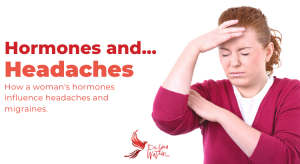
[1] Sacco S, Ricci S, Degan D, Carolei A. Migraine in women: the role of hormones and their impact on vascular diseases The Journal of Headache and Pain. 2012;13:177-189.
[2] Sacco S, Ricci S, Degan D, Carolei A. Migraine in women: the role of hormones and their impact on vascular diseases The Journal of Headache and Pain. 2012;13:177-189.
[3] Allais G, et al. Migraine in perimenopausal women. Neurological Science. 2015;36(suppl 1):79.
[4] Todd C, et al. Women and migraine: The roles of hormones. Current Neurology & Neuroscience Reports. 2018;18:42.
[5] Champaloux S, Tepper N, Monsour M, Curtis K, Whiteman M, Marchbanks P, et al. Use of combined hormonal contraceptives among women with migraines and risk of ischemic stroke. Obstet Gynecol Surv. 2017;72:543–5
[6] Vetvik KG, MacGregor EA. Sex differences in the epidemiology, clinical features, and pathophysiology of migraine. The Lancet. 2017;16(1):76-87.


